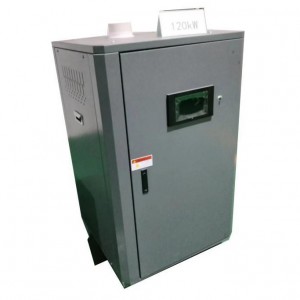- Afrikaans
- Albanian
- Amharic
- Arabic
- Armenian
- Azerbaijani
- Basque
- Belarusian
- Bengali
- Bosnian
- Bulgarian
- Catalan
- Cebuano
- China
- China (Taiwan)
- Corsican
- Croatian
- Czech
- Danish
- Dutch
- English
- Esperanto
- Estonian
- Finnish
- French
- Frisian
- Galician
- Georgian
- German
- Greek
- Gujarati
- Haitian Creole
- hausa
- hawaiian
- Hebrew
- Hindi
- Miao
- Hungarian
- Icelandic
- igbo
- Indonesian
- irish
- Italian
- Japanese
- Javanese
- Kannada
- kazakh
- Khmer
- Rwandese
- Korean
- Kurdish
- Kyrgyz
- Lao
- Latin
- Latvian
- Lithuanian
- Luxembourgish
- Macedonian
- Malgashi
- Malay
- Malayalam
- Maltese
- Maori
- Marathi
- Mongolian
- Myanmar
- Nepali
- Norwegian
- Norwegian
- Occitan
- Pashto
- Persian
- Polish
- Portuguese
- Punjabi
- Romanian
- Russian
- Samoan
- Scottish Gaelic
- Serbian
- Sesotho
- Shona
- Sindhi
- Sinhala
- Slovak
- Slovenian
- Somali
- Spanish
- Sundanese
- Swahili
- Swedish
- Tagalog
- Tajik
- Tamil
- Tatar
- Telugu
- Thai
- Turkish
- Turkmen
- Ukrainian
- Urdu
- Uighur
- Uzbek
- Vietnamese
- Welsh
- Bantu
- Yiddish
- Yoruba
- Zulu
dec. . 24, 2024 20:10 Back to list
Gray Iron Casting Manufacturer Specializing in High-Quality Customized Solutions for Various Industries
The Essence of Gray Iron Casting Factories
Gray iron casting has been a fundamental process in the manufacturing industry for centuries, providing an efficient means to create complex metal components. With its distinctive properties, gray iron foundries play a crucial role in various applications, from automotive parts to infrastructure components. This article aims to delve into the significance, processes, and advancements within gray iron casting factories.
Understanding Gray Iron
Gray iron is characterized by its high carbon content, which gives it a gray appearance due to the presence of graphite flakes. This inherent structure enhances certain properties, making gray iron highly desirable for casting applications. The material offers excellent machinability, good wear resistance, and the ability to absorb vibrations, making it an ideal choice for automotive engine blocks, pipes, and heavy machinery.
The Casting Process
The casting process at a gray iron casting factory typically involves several key steps
1. Pattern Making The process begins with designing a pattern, usually made of wood or metal, that replicates the desired final shape of the component. Patterns are crucial as they form the basis for the molds.
2. Mold Creation After the pattern is created, molds are formed using sand, which is bonded together to create a cavity that mirrors the pattern. The most common method employed is the green sand casting, where moist sand is used for its cost-effectiveness and ability to produce complex shapes.
3. Melting and Pouring Once the molds are prepared, the gray iron is melted in a furnace at temperatures around 1,400°C to 1,500°C (2,552°F to 2,732°F). The molten metal is then carefully poured into the molds to form the castings.
4. Cooling and Finishing After pouring, the metal is allowed to cool, solidifying into the desired shape. The castings are then removed from the molds, and any excess sand is cleaned off. Further finishing processes, such as machining and surface treatment, ensure that the components meet the required specifications and surface quality.
gray iron casting factory

Quality Control
In gray iron casting factories, quality control is paramount. Rigorous testing methods, including visual inspections, dimensional checks, and mechanical property assessments, ensure that the final products meet industry standards. Additionally, factories often utilize advanced techniques like X-ray inspection to detect internal defects in the castings, ensuring the integrity and reliability of the components.
Environmental Impact and Sustainability
As industries increasingly adopt sustainable practices, gray iron casting factories are also evolving. The production process can generate considerable waste, but many foundries are now implementing recycling methods to reclaim scrap metal and reduce energy consumption. Modern technologies, such as electric arc furnaces (EAF), are being utilized to minimize emissions and improve overall energy efficiency. This commitment to sustainability not only benefits the environment but also enhances the reputation of gray iron manufacturers.
Technological Advancements
Recent advancements in technology have significantly improved gray iron casting capabilities. The integration of automation and robotics in the casting process has led to increased precision, reduced labor costs, and higher production rates. Moreover, simulation software allows engineers to predict potential issues in the casting process, enabling them to optimize designs before production begins. These advancements position gray iron casting factories to better meet the growing demands of various industries.
Future of Gray Iron Casting
Looking forward, the gray iron casting industry is likely to continue its evolution. With the rise of electric vehicles and the demand for lightweight components, the factories may need to adapt to new materials and techniques. Innovation in alloy development and casting processes will be essential to stay competitive and accommodate changing market requirements.
Conclusion
Gray iron casting factories serve as the backbone of several critical industries, providing durable and reliable components essential for technological advancement. Through a combination of traditional craftsmanship and modern technology, these facilities ensure that gray iron remains a material of choice in the manufacturing world. As we move into the future, the commitment to quality, sustainability, and innovation will undoubtedly shape the evolution of gray iron casting, continuing to meet the demands of a dynamic marketplace.
-
8mm Thin-Walled Cast Steel Manhole Cover Pallet Bottom Ring | Durable
NewsAug.04,2025
-
Premium Cast Iron Water Main Pipe: Durable, Corrosion-Resistant
NewsAug.03,2025
-
Durable Cast Iron Water Mains | AI-Optimized Systems
NewsAug.02,2025
-
High-Efficiency Propane Boiler for Baseboard Heat | Save Energy
NewsAug.01,2025
-
Premium Source Suppliers for Various Gray Iron Castings
NewsJul.31,2025
-
Durable Cast Iron Water Main Pipes | Long-Lasting
NewsJul.31,2025


